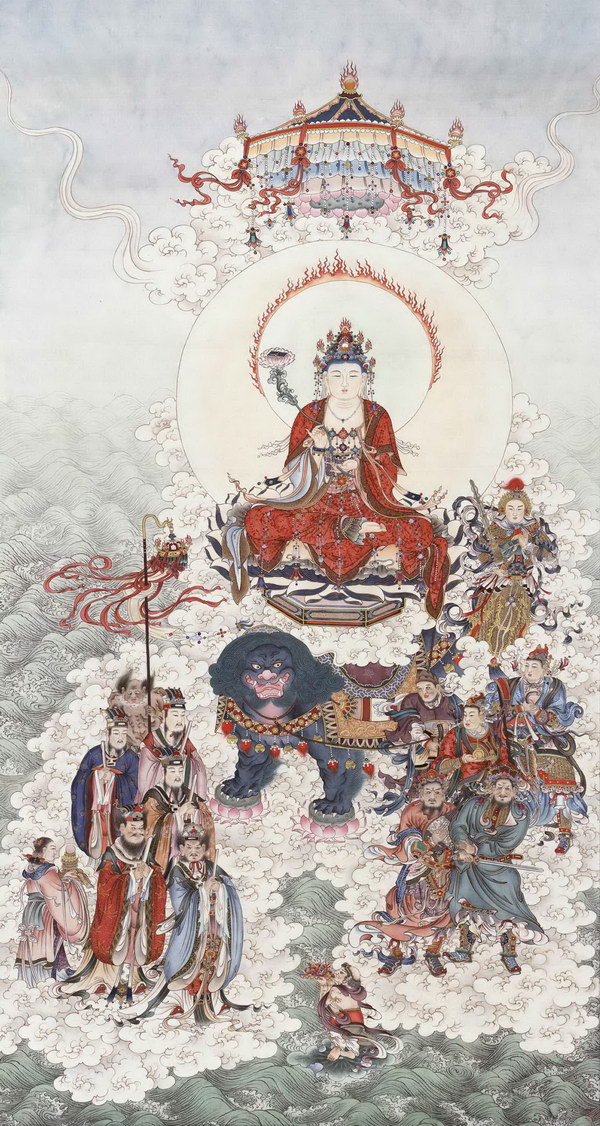
Chinese calligraphic painting is a unique performance of art, a particular genre that is shaped by painting tools, painting materials, forms of expression, cultural thinking and aesthetic viewpoints. As a result, the discussion on Chinese calligraphic painting requires not only the observation of exterior lines, forms, colors, and compositions but also meditation on the cultural thinking and the consciousness embedded in the painting subjects. Furthermore, understanding the painter’s personality and life experience will also enrich the knowledge of his/her works. Mr. Jing-shan Xia learned Chinese painting from famous painting mentors when he was young. He then visited many eminent painting masters and Furthermore flower painting, figure painting, lady painting skills, and mountain river painting skills. After that, he converted to Buddhism and dug into Buddhist Dharma and painting through his continued art creation. With years of experience, Xia had developed his theme conception and painting skills in a more delicate and antique way. Chinese culture, which is like the sea into which the rivers run, is extensiveand profound. When Buddhism was introduced to China, it had been was Chinesized and became one of the three pillars of Chinese culture, along with Confucianism and Taoism. Mr. Jing-Shan Xia, who adopted the cultural characteristics of Chinese painting, combined Buddhist painting with the content and characteristics of Chinese culture as he polished and developed his painting from traditional Chinese painting to Buddhist arts. Therefore, Xia is considered a significant figure in mainland China’’s calligraphy and painting circles. This essay starts with the life story of Mr. Jing-Shang Xia to learn the relationships between his life experiences and his painting. Then, it focuses on his behaviors for public interests as a way of exploring his thinking. and finally, categorizes and analyzes his Buddhist works to investigate the origin and development of the forms and features of his painting. By discussing Mr. Xia’s cultural memory and heritages represented by his thought, artistic expression, and specific behaviors, this essay aims to provide suggestions for the restoration and development of Chinese calligraphy and painting.
